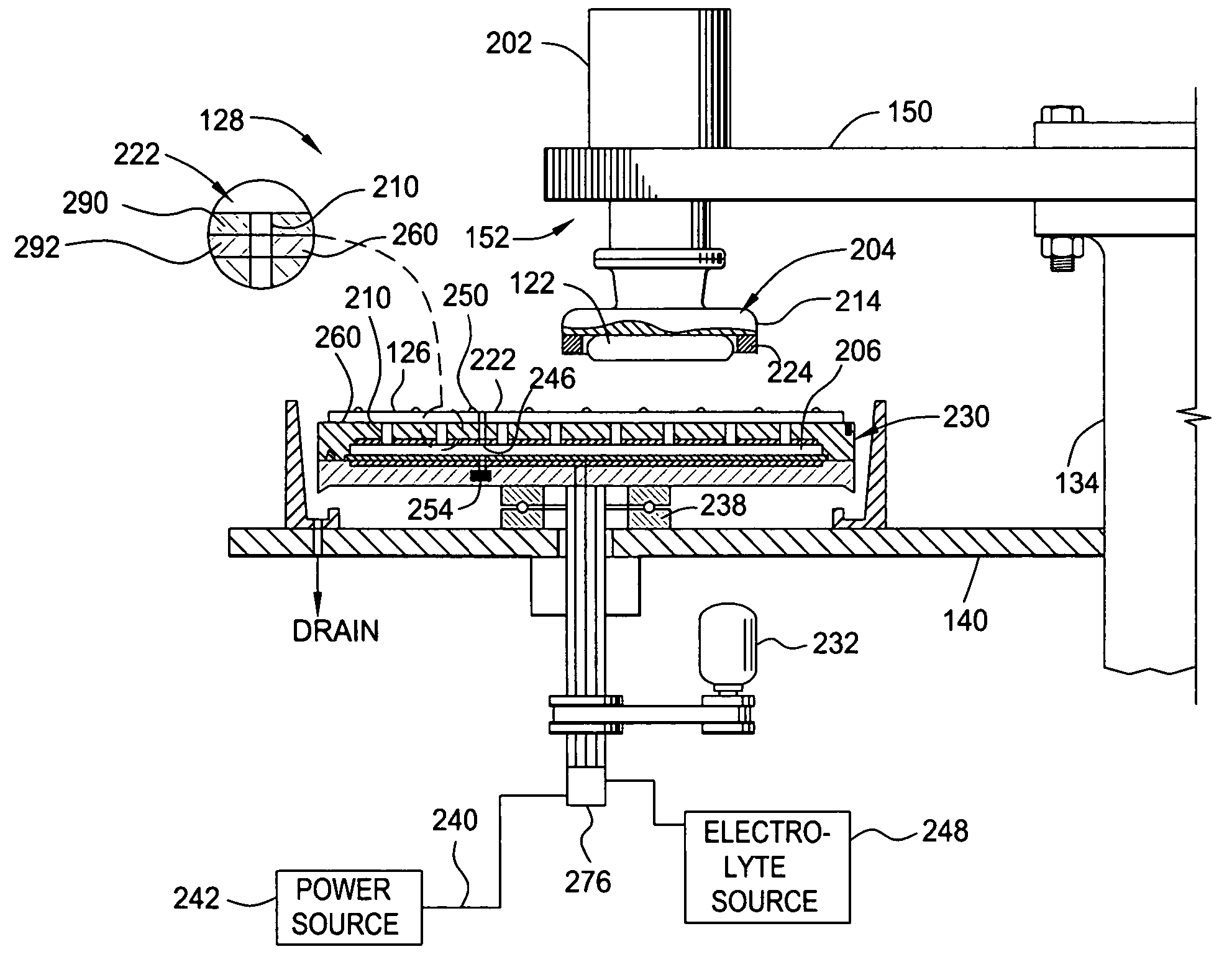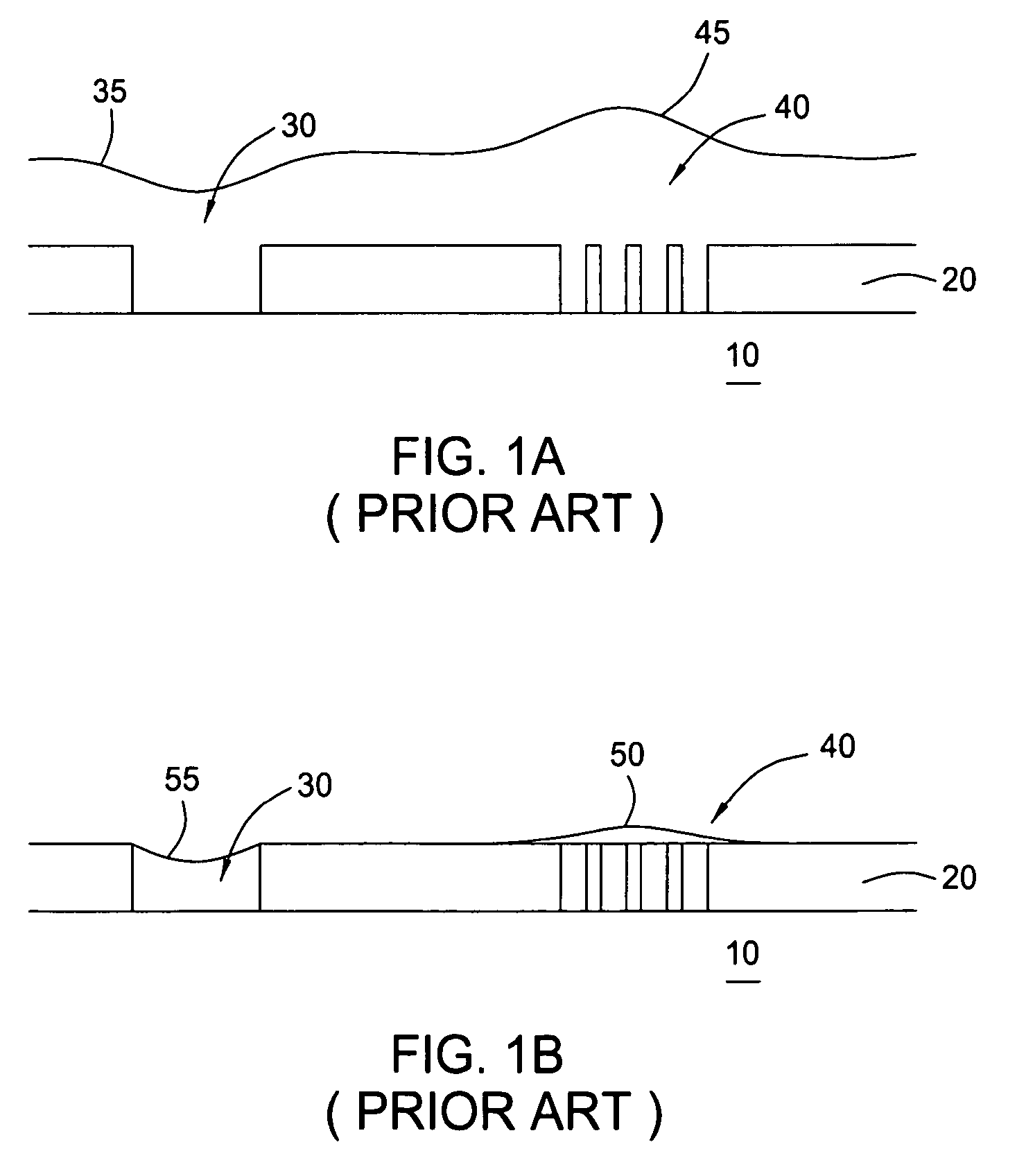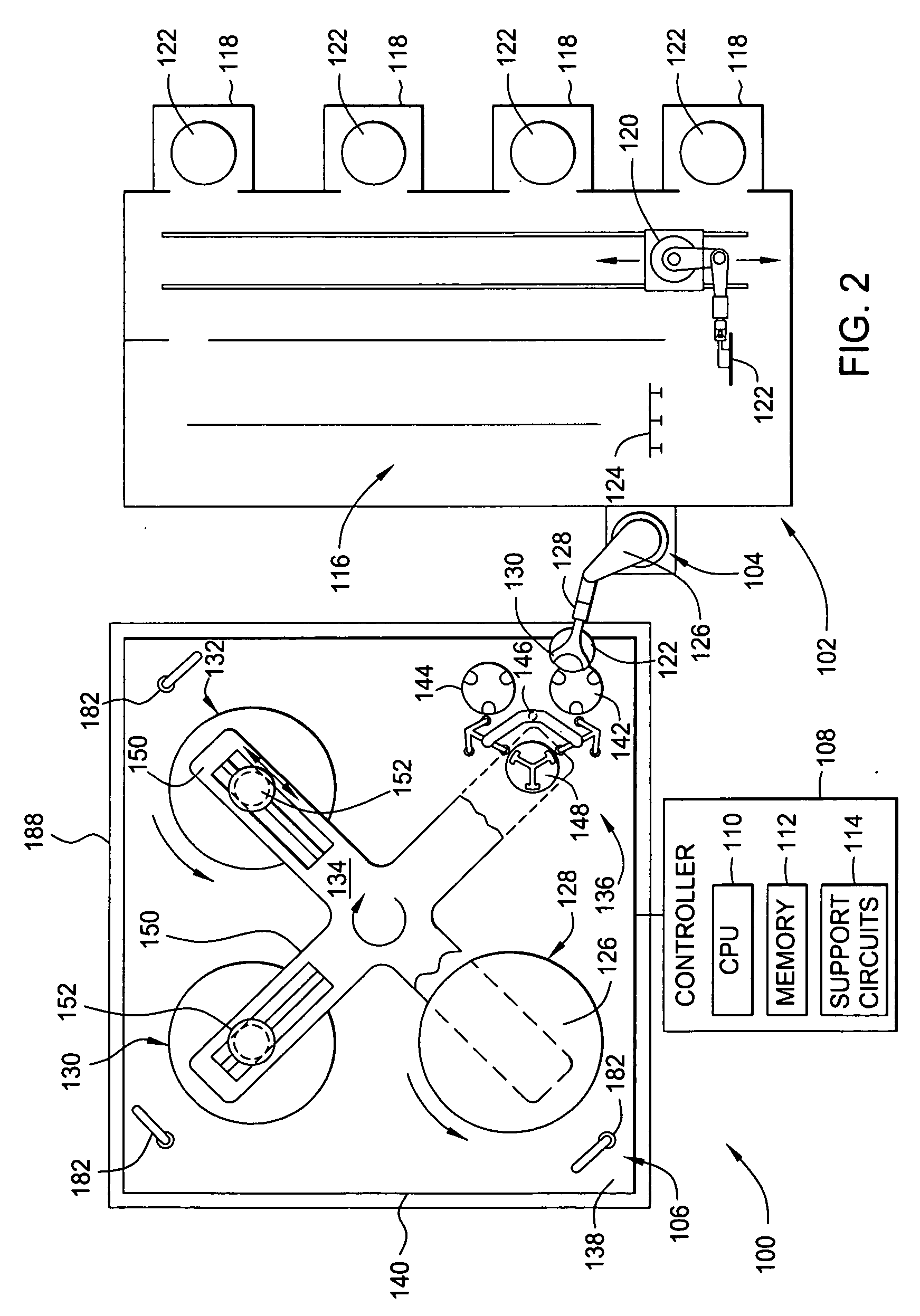Method and composition for polishing a substrate
a technology of substrate and composition, applied in the direction of electrolysis components, manufacturing tools, chemistry apparatus and processes, etc., can solve the problems of uneven surface formation, undesirable residue retention, and residue dishing on the substrate surface,
- Summary
- Abstract
- Description
- Claims
- Application Information
AI Technical Summary
Benefits of technology
Problems solved by technology
Method used
Image
Examples
example 1
[0172] A copper plated substrate was polished and planarized using the following polishing composition within a modified cell on a Reflection® system, available from Applied Materials, Inc. of Santa Clara, Calif. [0173] about 12 wt. % potassium phosphate monobasic; [0174] about 1% by volume ethylenediamine; [0175] about 2% by weight ammonium citrate tribasic; [0176] about 0.3% by weight benzotriazole; [0177] between about 0.5% and about 3% by volume of 85% phosphoric acid solution to provide a pH between about 4.5 and about 6; and [0178] deionized water.
example 2
[0179] A copper plated substrate was polished and planarized using the following polishing composition within a modified cell on a Reflection® system, available from Applied Materials, Inc. of Santa Clara, Calif. [0180] about 12 wt. % potassium phosphate monobasic; [0181] about 1% by volume ethylenediamine; [0182] about 2% by weight ammonium citrate tribasic; [0183] about 0.3% by weight benzotriazole; [0184] between about 0.5% and about 6% by volume of 45% potassium hydroxide to provide a pH of about 5; and [0185] deionized water.
example 3
[0186] A copper plated substrate was polished and planarized using the following polishing composition within a modified cell on a Reflection® system, available from Applied Materials, Inc. of Santa Clara, Calif. [0187] about 12 wt. % potassium phosphate monobasic; [0188] about 1% by volume ethylenediamine; [0189] about 2% by weight imidoacetic acid; [0190] about 0.3% by weight benzotriazole; [0191] between about 0.5% and about 3% by volume of 85% phosphoric acid solution to provide a pH between about 4.5 and about 6; and [0192] deionized water.
PUM
| Property | Measurement | Unit |
|---|---|---|
| pressure | aaaaa | aaaaa |
| pressure | aaaaa | aaaaa |
| wt. % | aaaaa | aaaaa |
Abstract
Description
Claims
Application Information
 Login to View More
Login to View More - R&D
- Intellectual Property
- Life Sciences
- Materials
- Tech Scout
- Unparalleled Data Quality
- Higher Quality Content
- 60% Fewer Hallucinations
Browse by: Latest US Patents, China's latest patents, Technical Efficacy Thesaurus, Application Domain, Technology Topic, Popular Technical Reports.
© 2025 PatSnap. All rights reserved.Legal|Privacy policy|Modern Slavery Act Transparency Statement|Sitemap|About US| Contact US: help@patsnap.com



